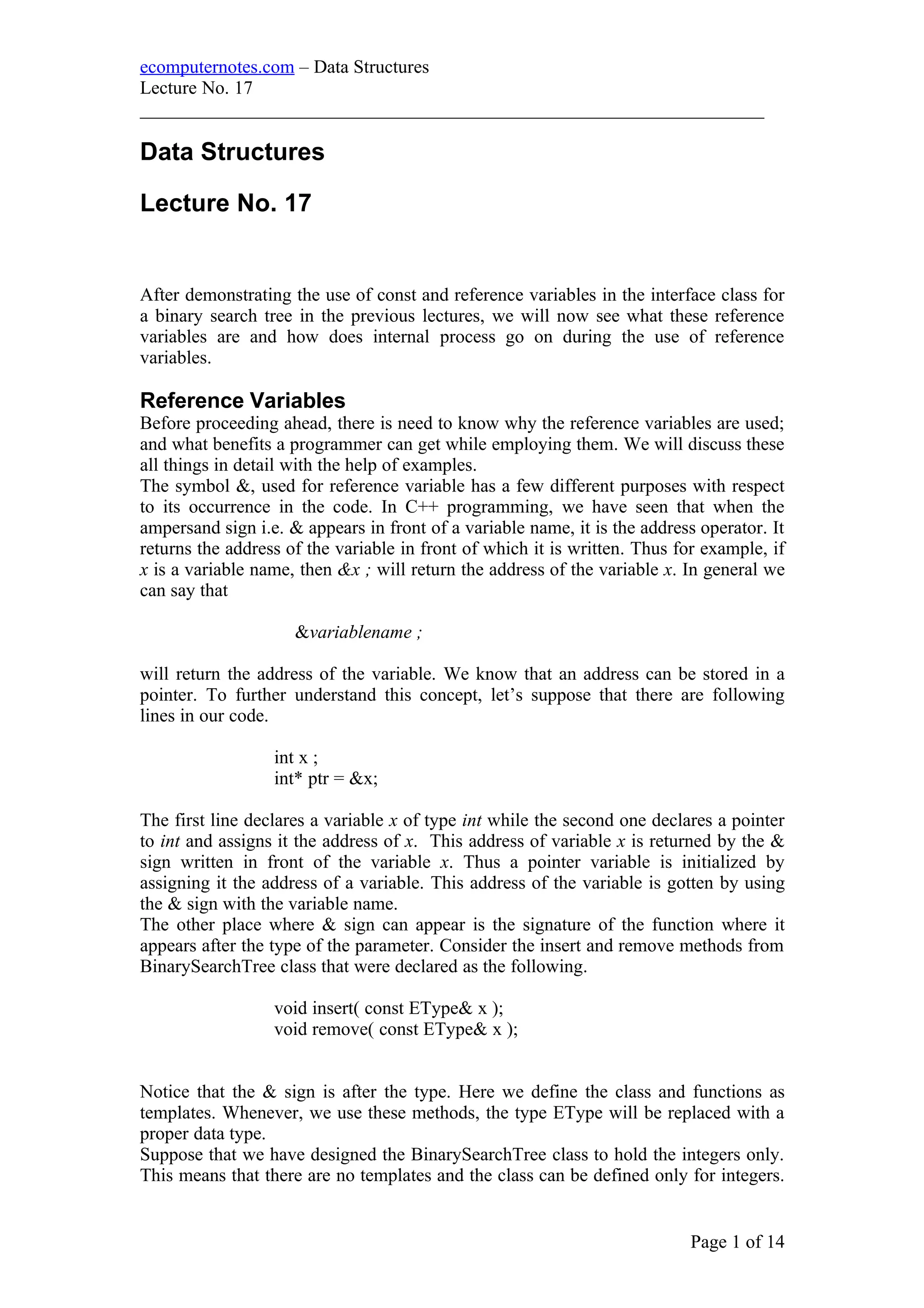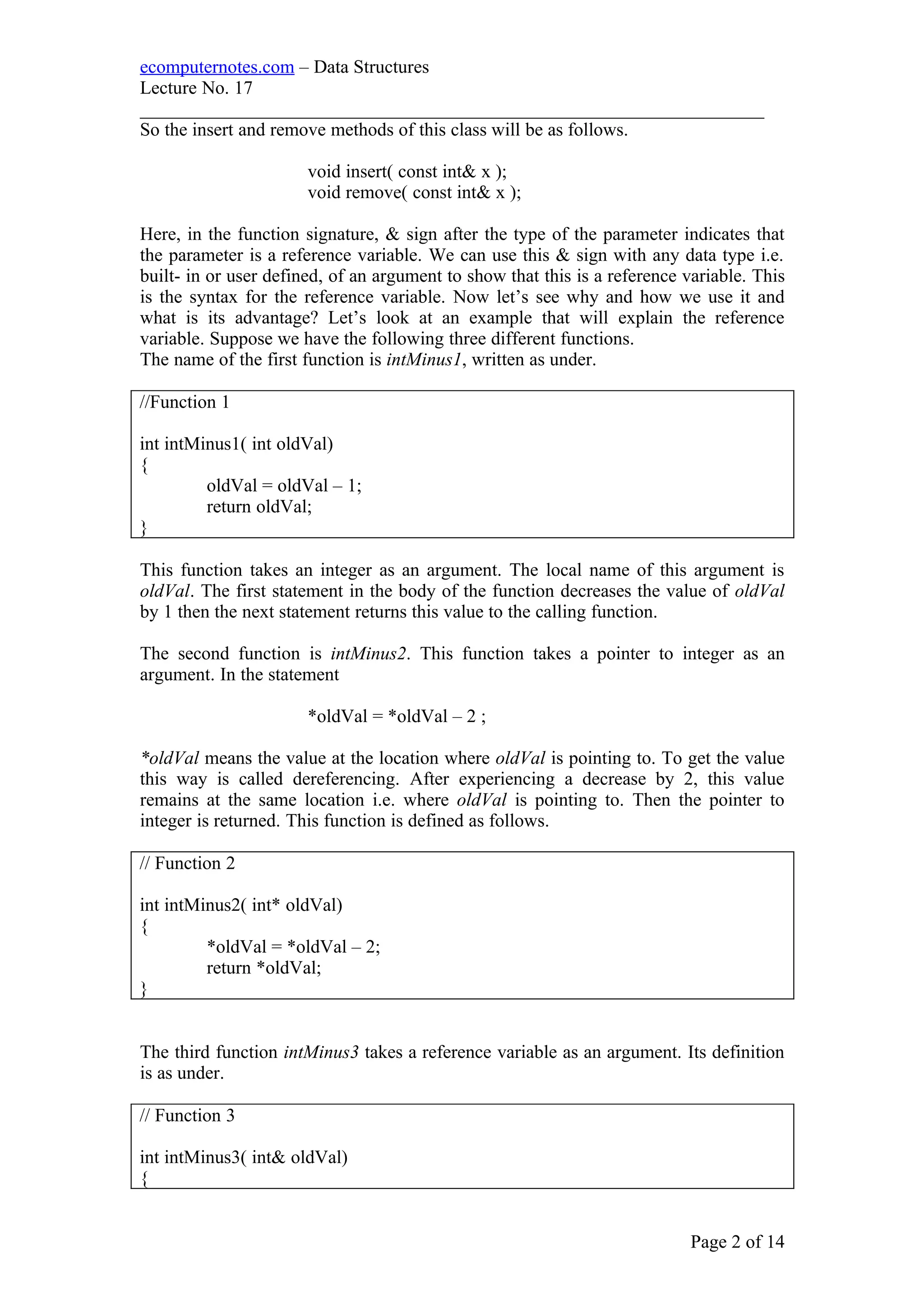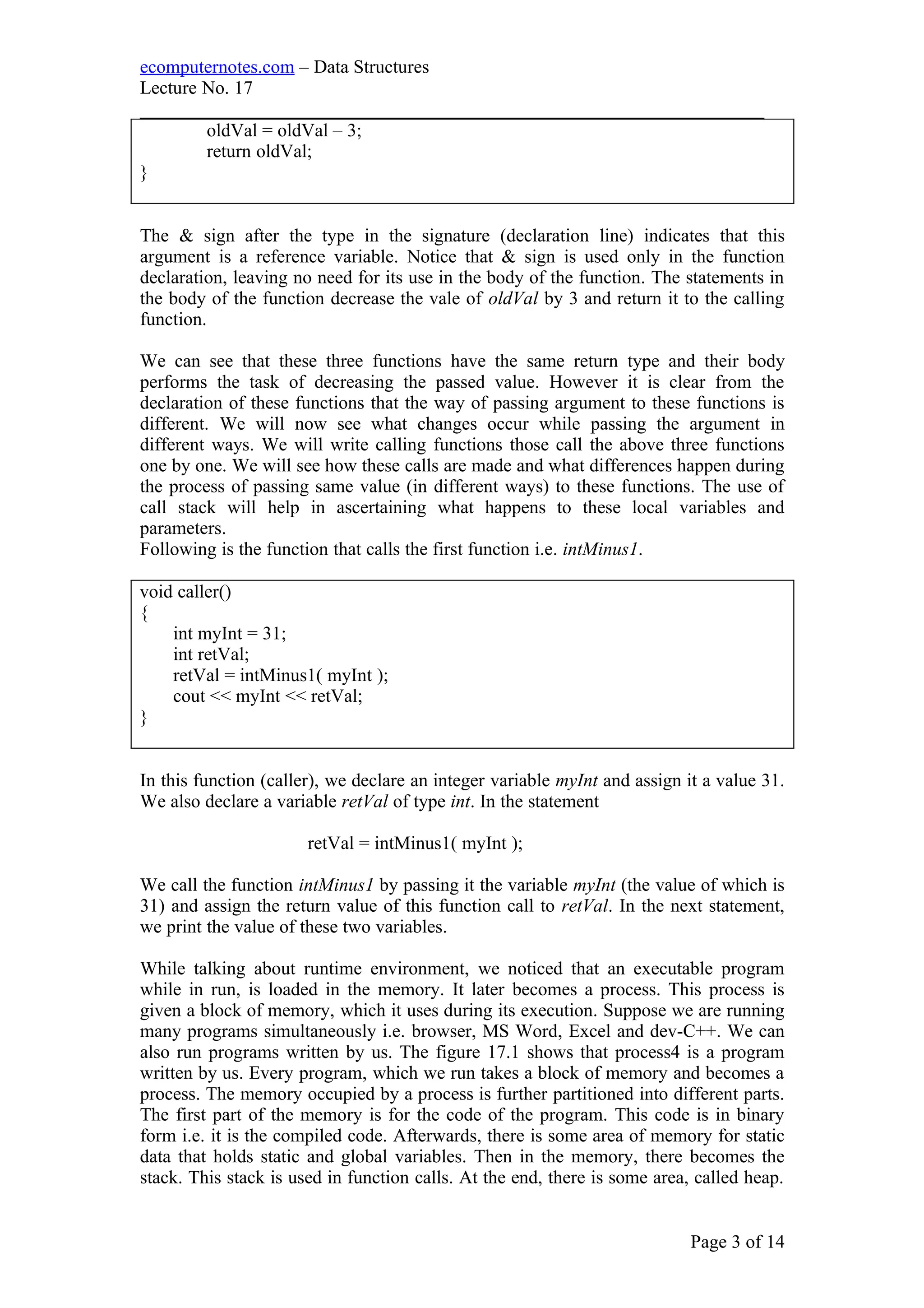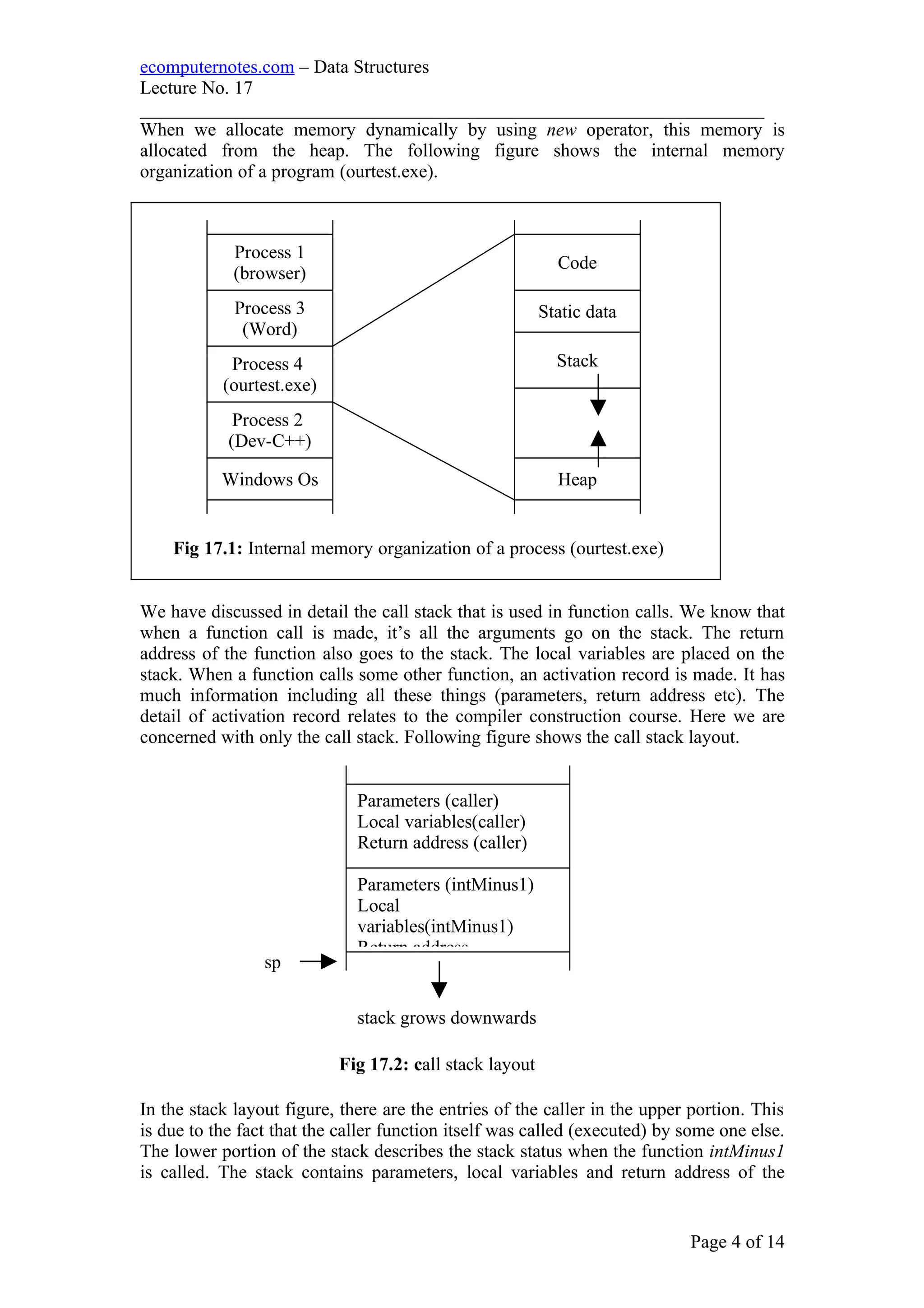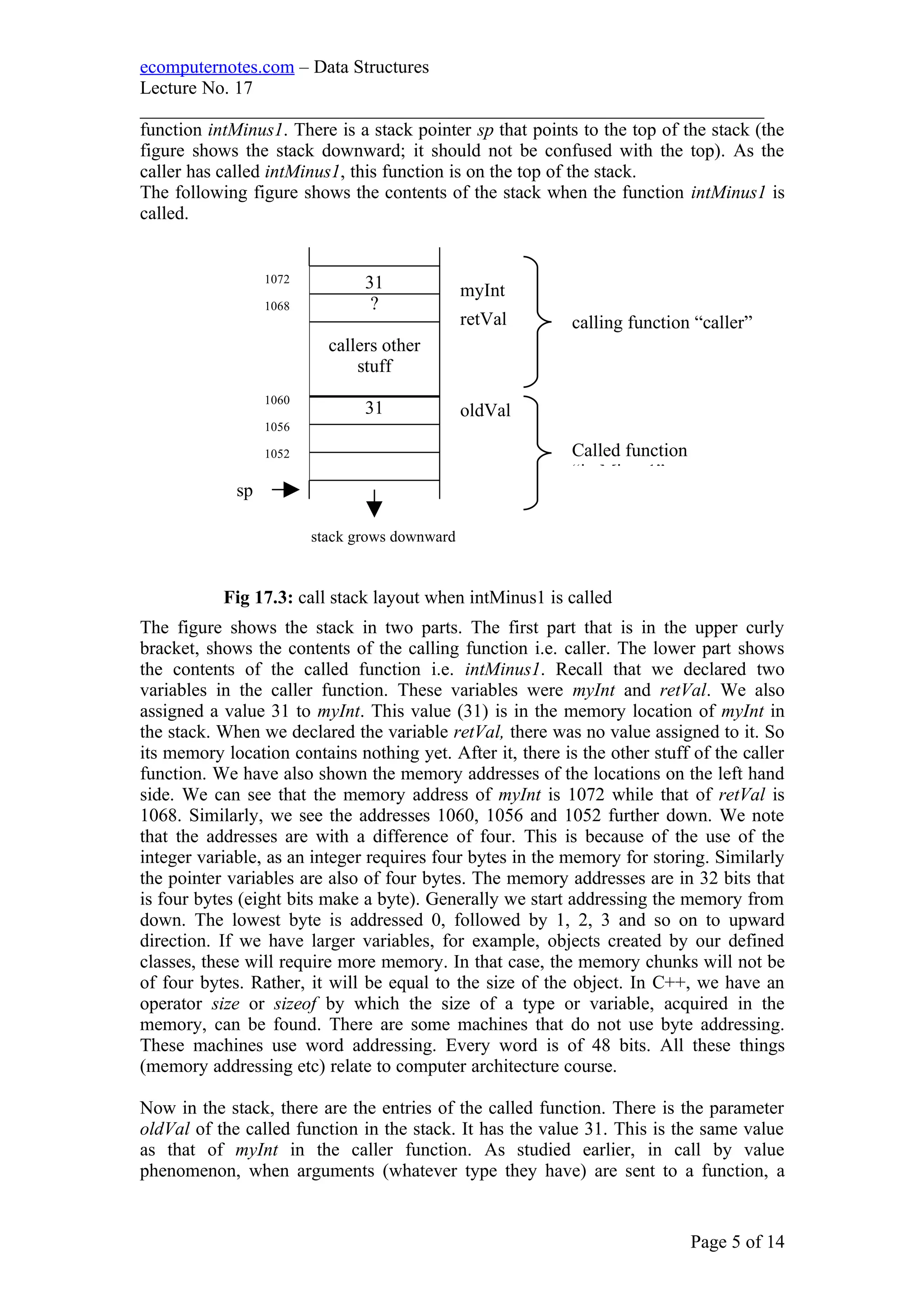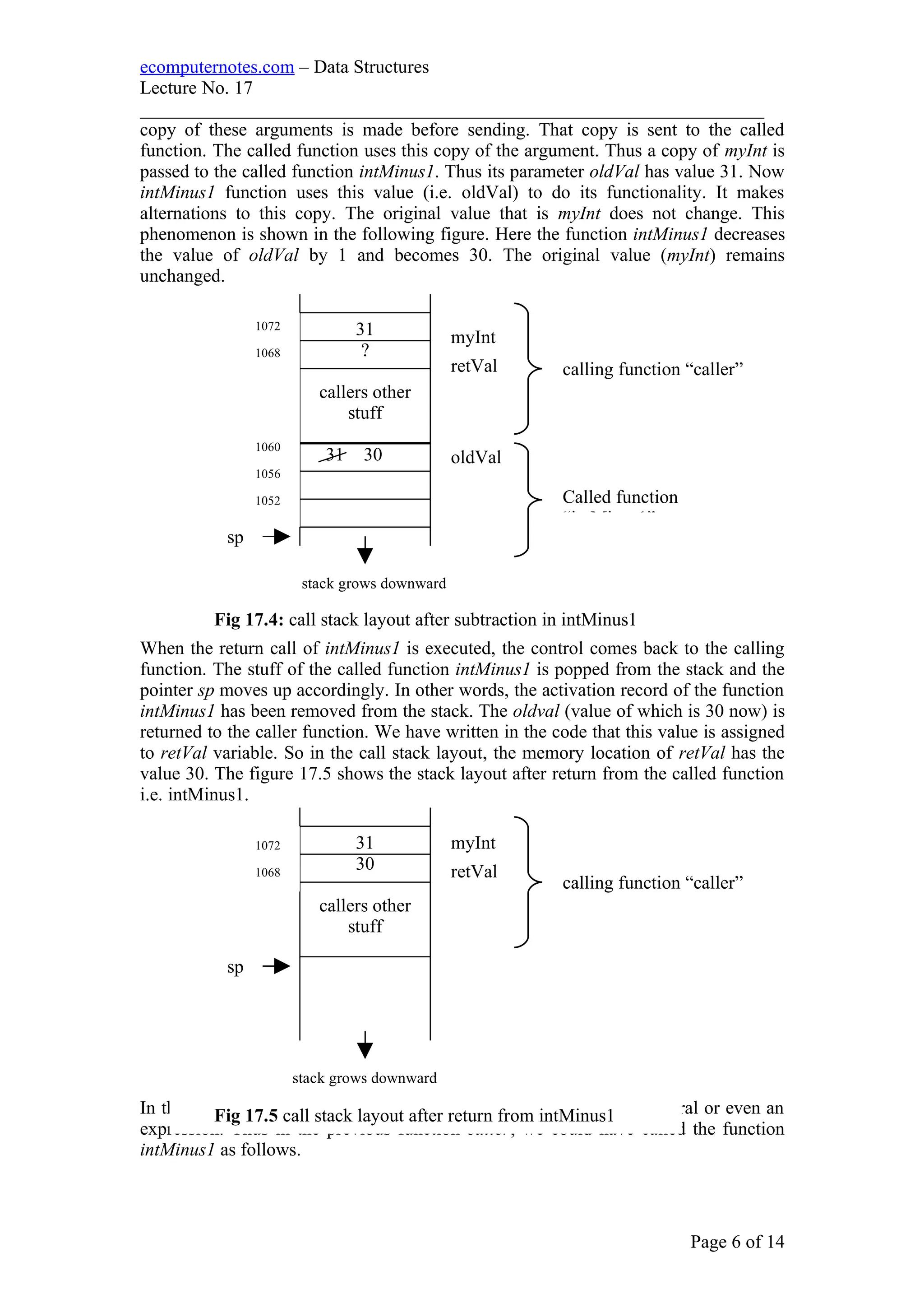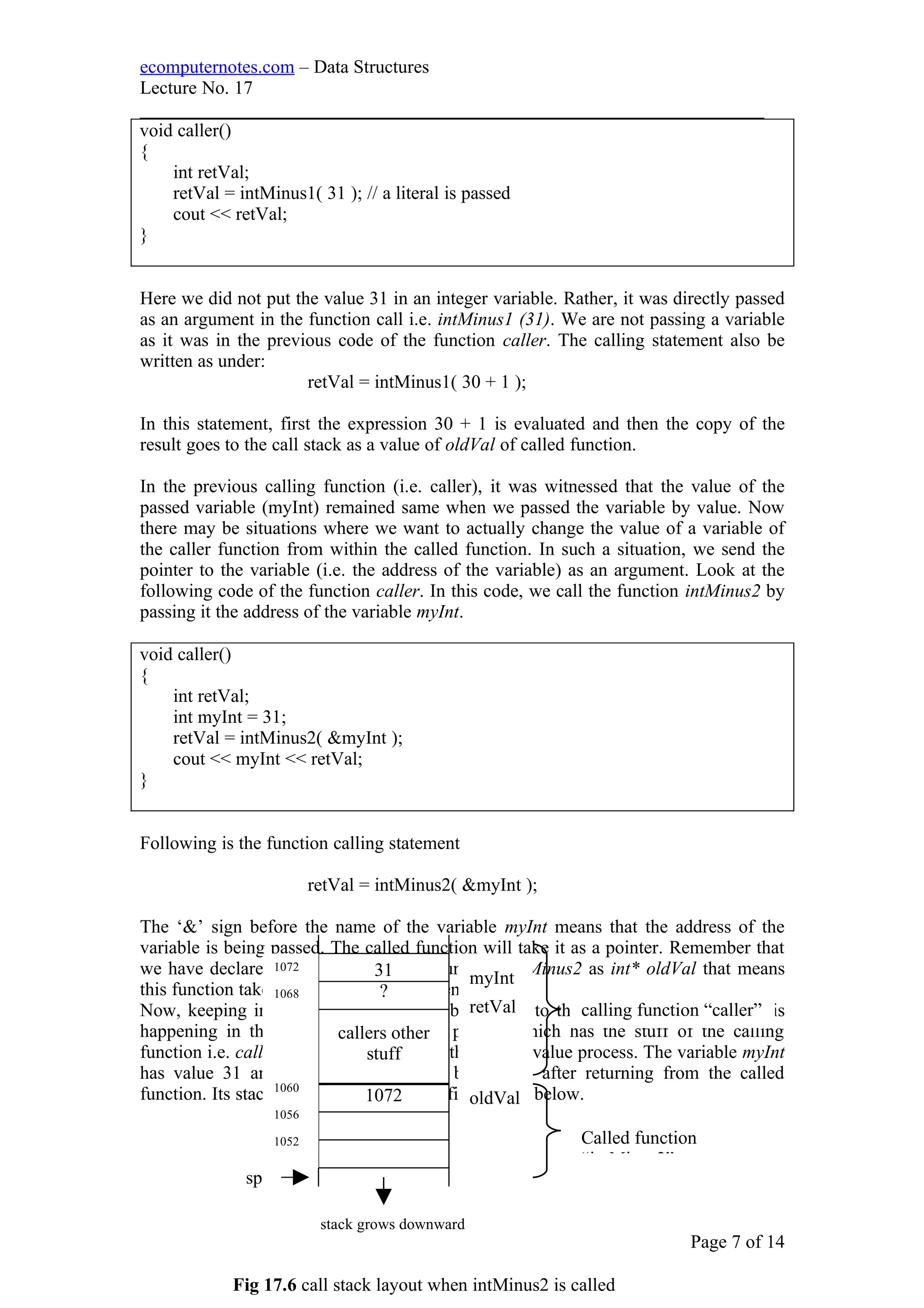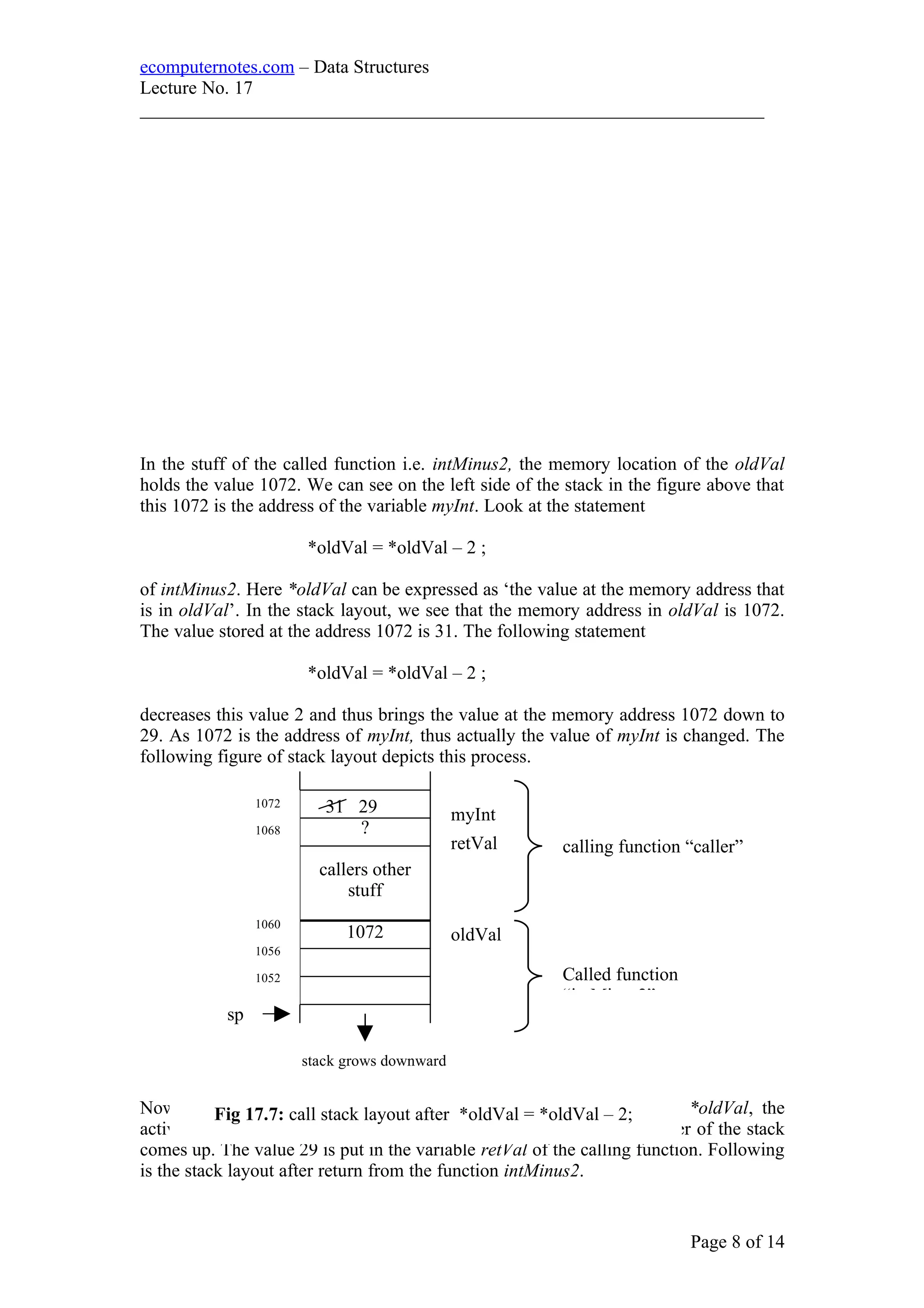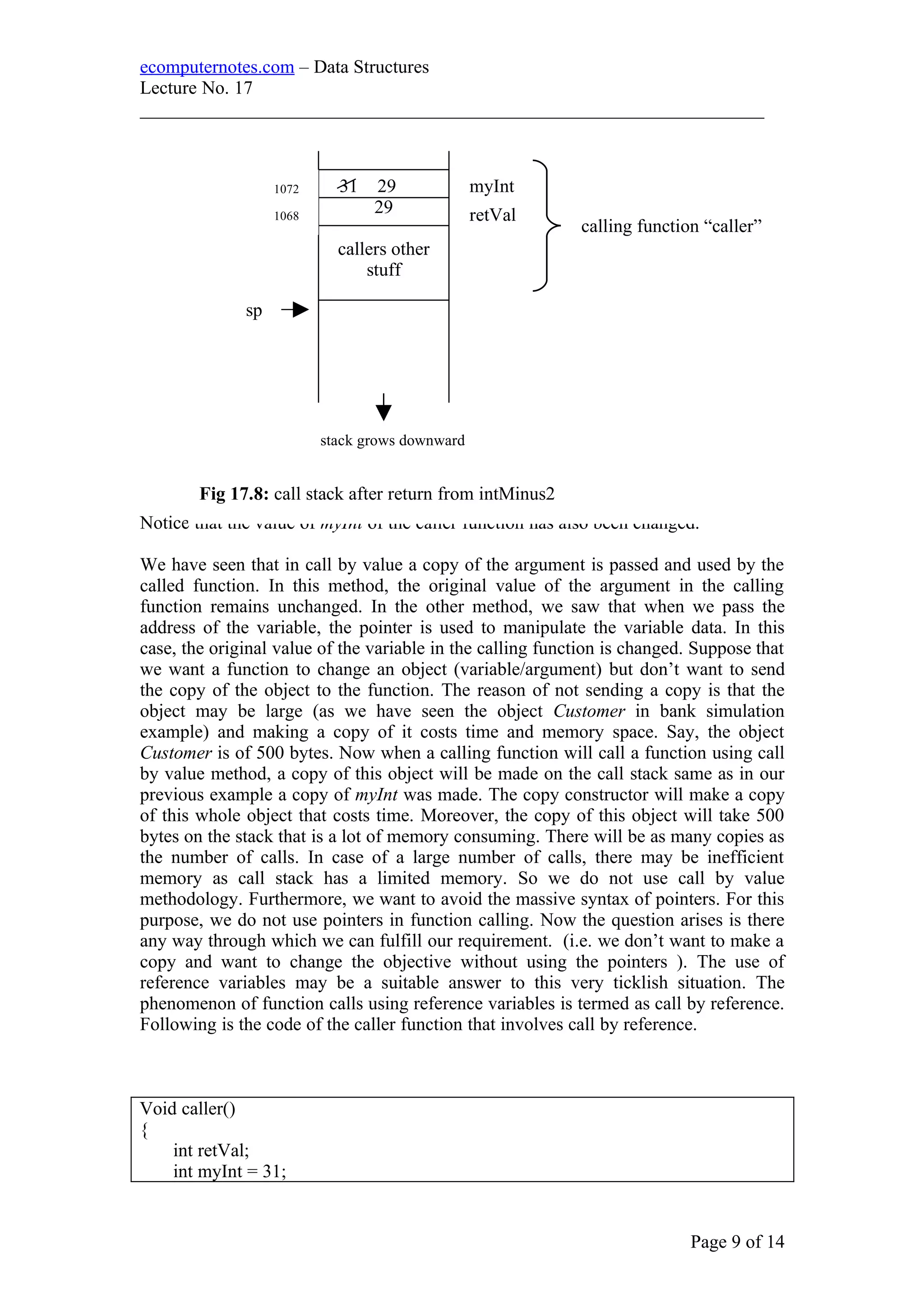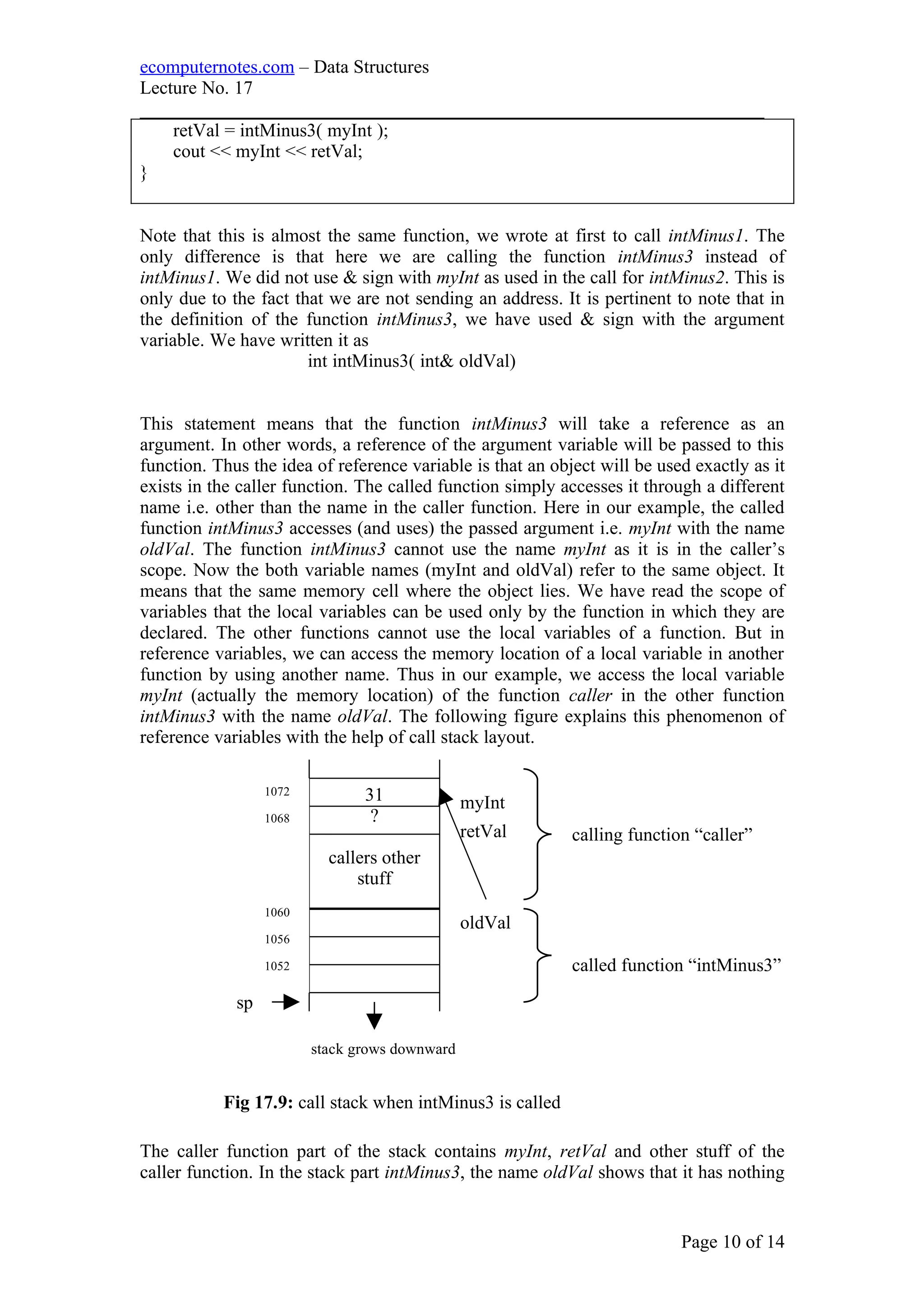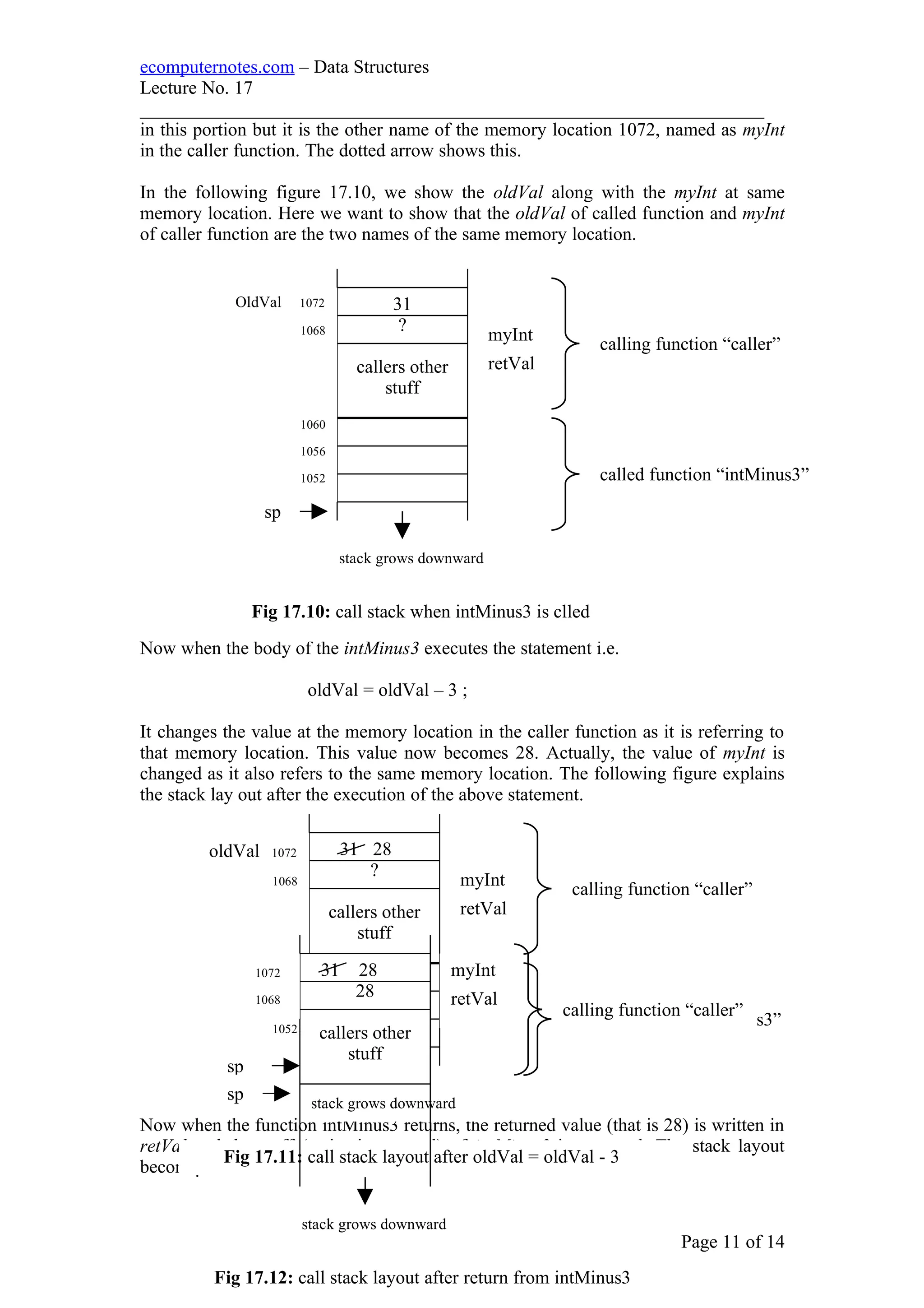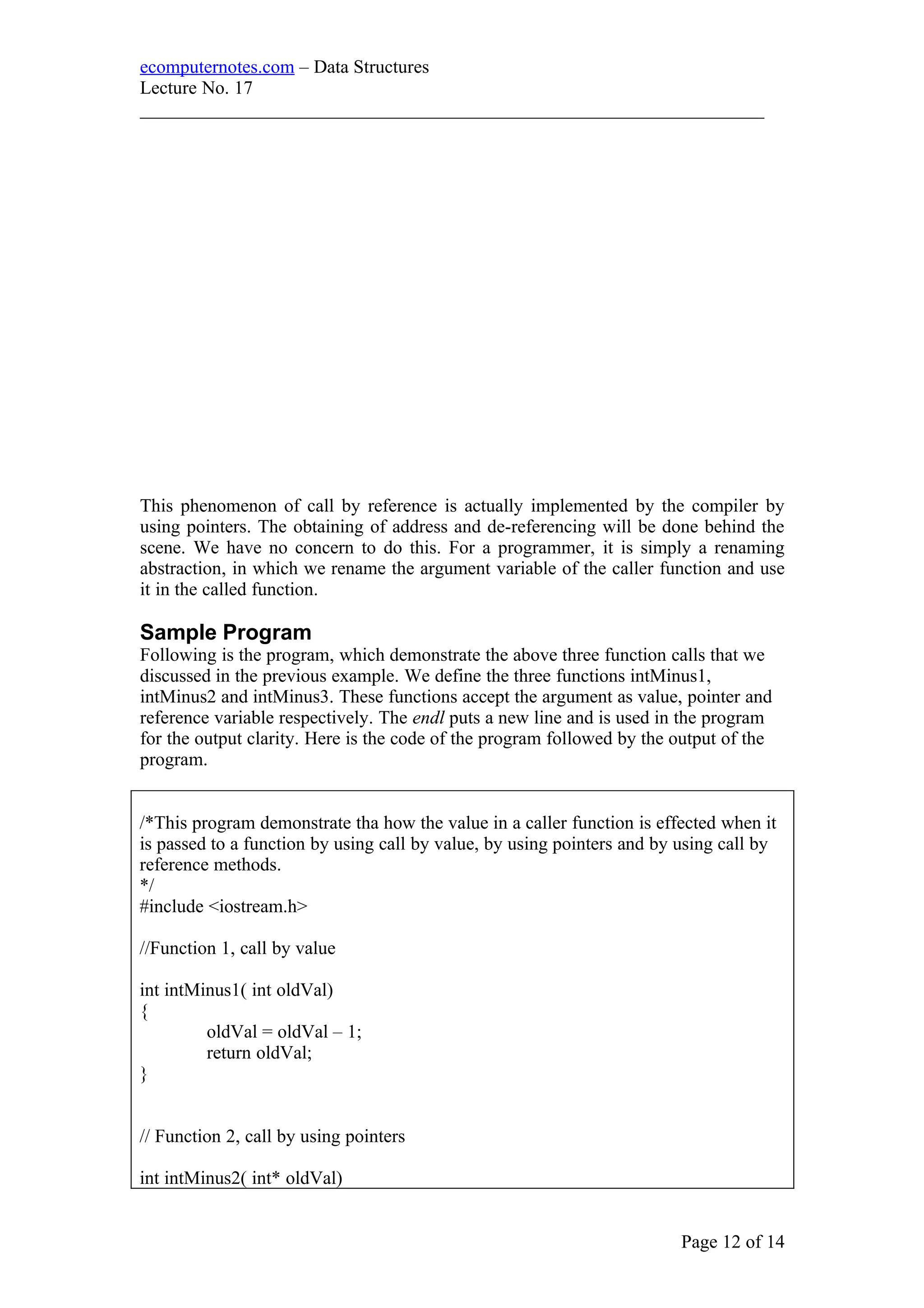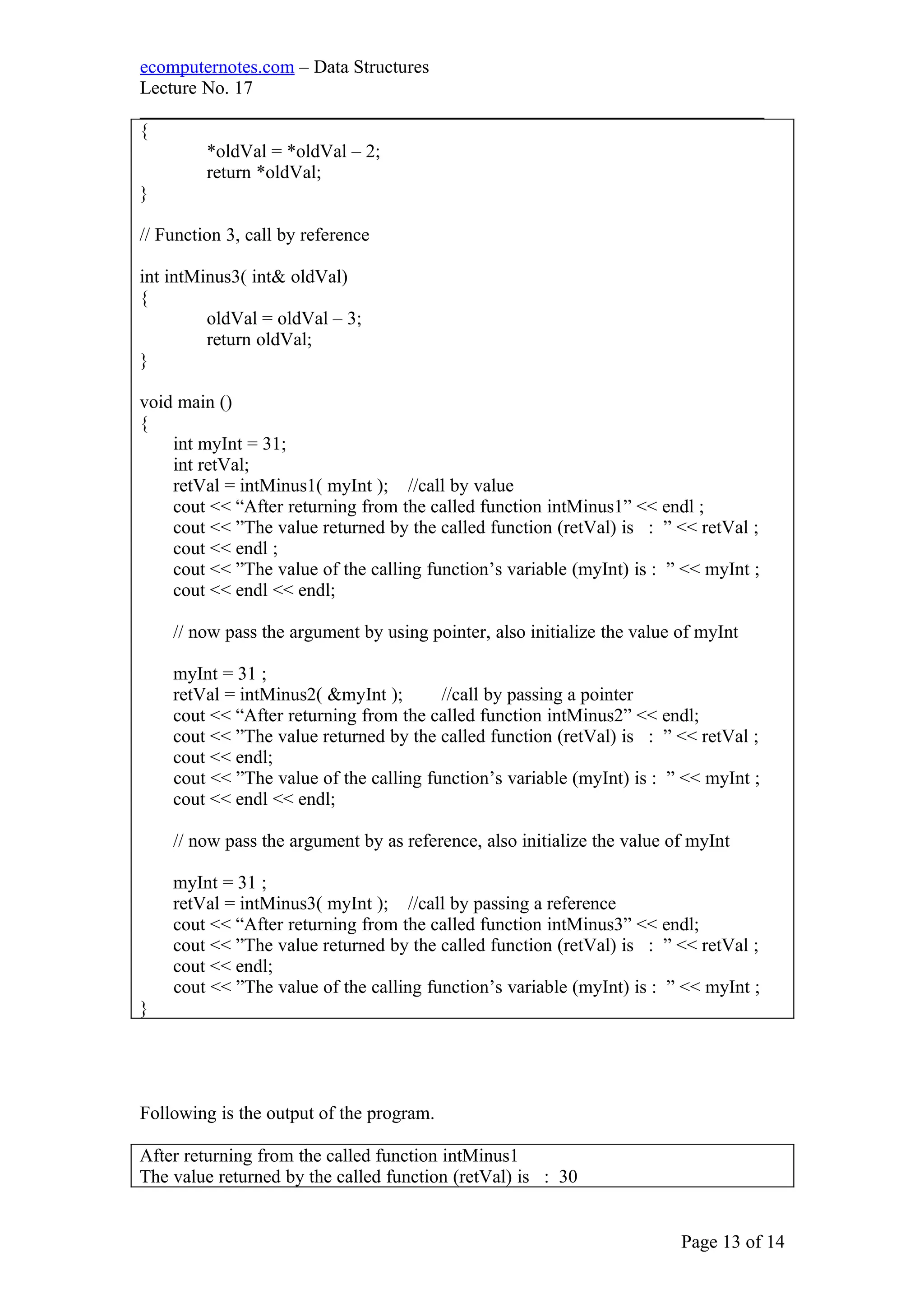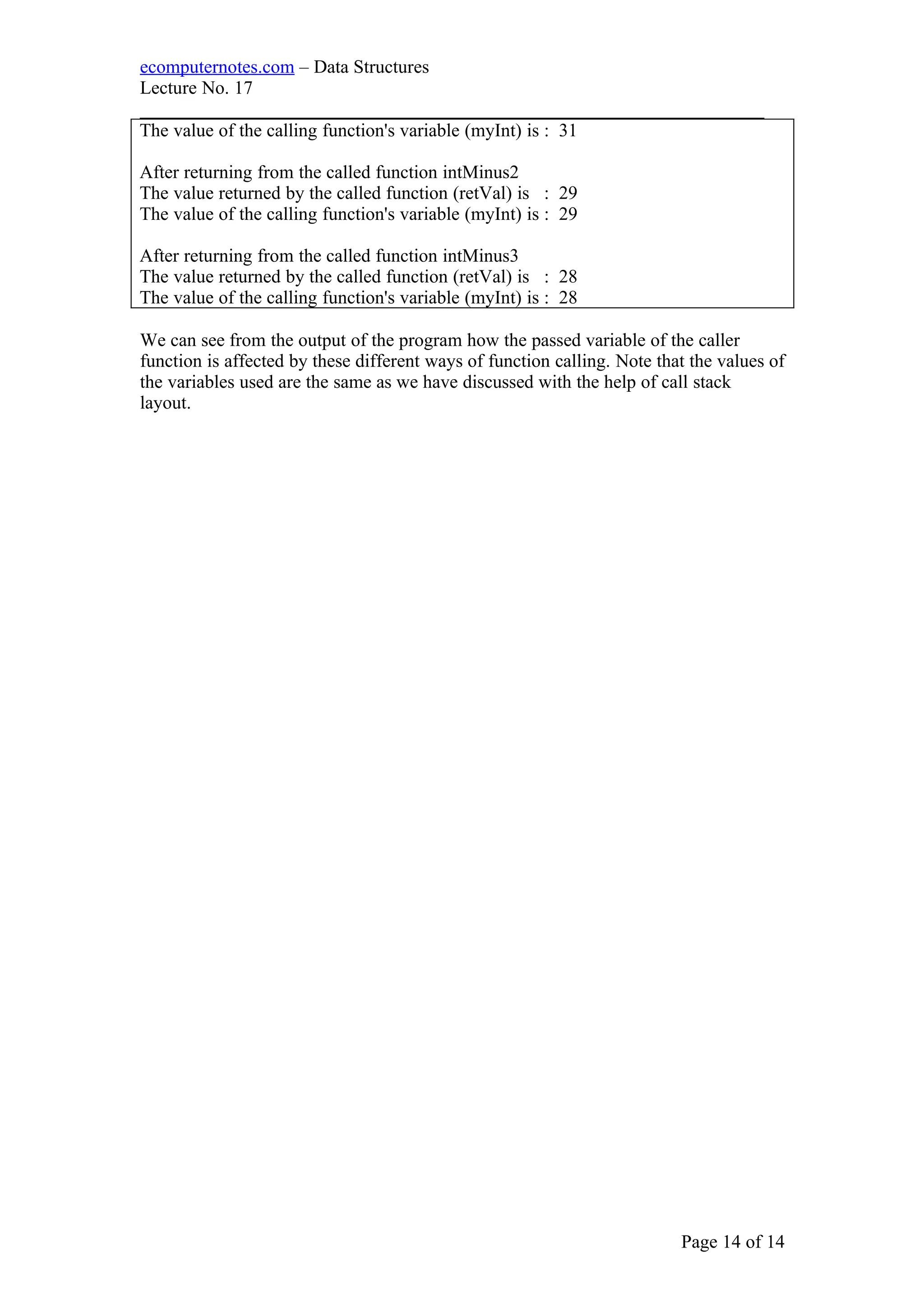This document summarizes key aspects of reference variables in C++. It discusses how reference variables are declared using an ampersand (&) symbol and how they differ from regular variables and pointer variables. It provides an example comparing three functions - one that passes a regular variable, one that passes a pointer, and one that passes a reference. When the reference variable function is called, the reference acts like an alias to the original variable, so changes made to the reference inside the function also change the original variable. This allows passing large objects to functions without incurring copying overhead.
